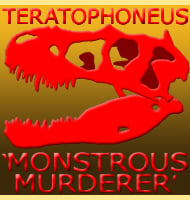Aetosauroides
In Depth Potentially, Aetosauroides is one of the oldest aetosaurs currently known, and is comparable in age to other genera such as Stagonolepis and Aetobarbakinoides. In fact Aetosauroides has been suggested to be a synonym to Stagonolepis on more than one occasion, though the wider consensus is that it is actually a separate genus. As … Read more
